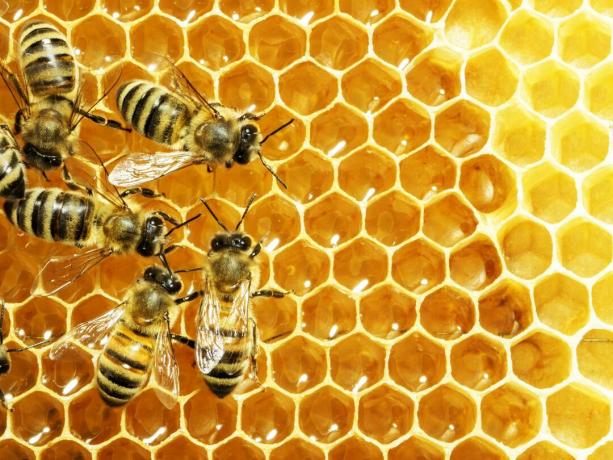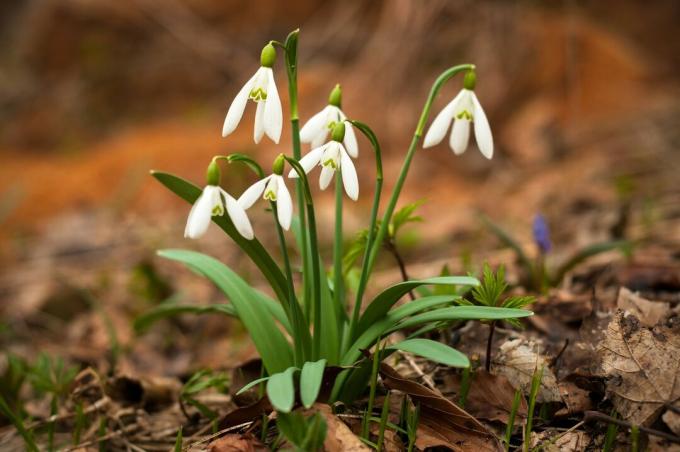Have you heard of the phenological calendar? In this article we explain what it is all about and how you can use it in the garden.

Phenology is a very ancient science that has been practiced for well over a century. It collects the occurrence of certain natural events annually and thus defines 10 phenological seasons. We explain to you what phenology exactly is and how you can use the natural seasons in the form of a Garden planners can use to cultivate your garden very close to nature and thus rich harvests retract.
contents
- What is Phenology?
- Phenological indicator plants and seasons
-
Gardening according to the phenological calendar
- Phenological calendar as a garden planner
- Advantages of the phenological calendar
What is Phenology?
Phenology deals with developmental steps or behaviors in plants and animals that occur every year anew, but depending on the weather at different dates. Observations such as flowering times or the flight of the
Migratory birds in the south are documented in order to be able to provide useful recommendations for agriculture, climate research or beekeepers.The word "phenology" means something like "doctrine of phenomena". Phenological studies deal with when and why which weather-related events occur during the course of the year. Both the behavior of the animals and the behavior of the plants can be studied. Because both react very sensitively to small changes in temperature or in the weather and adapt their behavior as best they can to the respective conditions. Examples of phenological observations on plants are the times of leaf shoot, flowering, fruit or leaf fall. In the case of animals, for example, points in time such as the beginning of hibernation, the mating season or the setting of young can be recorded. Most phenological calendars are based on plants because they are easy to find and can be checked regularly.

Phenological indicator plants and seasons
By documenting the developmental stages of certain pointer plants, phenological calendars are created that are in the Agriculture, climate research, the pollen information service and even the tourism industry can. The so-called “early spring” begins, for example, when the hazelnut (Corylus avellana) blooms. The seasons of the phenological calendar always begin and end with such a natural event.
Phenological calendars are created annually with the help of pointer plants. The developmental steps of these phenological indicator plants are called phenophases - they mark the beginning of the phenological seasons. The phenological calendar knows a total of ten seasons and for each of them characteristic events in nature. As with the classic seasons, one of them always ends with the beginning of another, i.e. when the next natural event occurs.
The highlight of the phenological seasons: They are not the same everywhere. Have you ever noticed with astonishment that the snowdrops in the neighboring village start to bloom much earlier or later than yours? This is because the phenological seasons come different everywhere - that is quite logical, after all, in some places it stays cool longer, it rains more, freezes harder or the sun shines more. The phenological calendar is therefore individual at each location. The following pointer plants and their stages of development classically define the beginning of the ten phenological seasons:
- Hazelnut blossom (Corylus avellana): Early spring
- Bloom of the Forsythia (Forsythia x intermedia): First spring
- Blossom of the Apple (Malus): Full spring
- Black Elderberry Blossom (Sambuccus nigra): Early summer
- Blossom of summer linden (Tilia cordata): Midsummer
- Ripe early / August / clear apples (Malus x domestica): Late summer
- Ripe elderberries (Sambuccus nigra): Early autumn
- Ripe horse chestnut (Aesculus hippocastanum): Full autumn
- Autumn color of the English oak (Quercus robur): Late autumn
- Leafless English oak (Quercus robur): Winter

If one of the above-mentioned pointer plants is missing in an observed area, other plants are used as a substitute. For example, the bloom of hazelnut (Corylus avellana) and snowdrop (Galanthus nivalis) at the same time and the ripeness of early apples (Malus domestica) can be due to the fruit ripeness of the mountain ash (Sorbus aucuparia) be replaced.
Tip: If one looks at the phenological seasons in comparison to the calendar seasons of the last few years, one can see a shift determine: As a result of climate change, the "natural" seasons no longer occur precisely in the time periods in which we see them in the calendar suspect. That is why we feel that spring is often “too early” and winter “too late”: after all, the classic calendar cannot adapt to the climate.
Gardening according to the phenological calendar
As a gardener, beekeeper or allergy sufferer, you can benefit directly from phenology. You can identify sensible times for sowing, transplanting and harvesting or foreseeing the imminent appearance of pollen or plant pests. The mechanisms of nature are used to cultivate the plants under the most optimal conditions possible.

Those who garden according to a phenological garden plan use the pointer plants as a "Measuring instruments" that probe their environment with complex biological mechanisms and are sensitive to react to that. For gardeners, for example, recommendations for watering can be found in the phenological calendar Occurrence of certain pests and at the right times for sowing, planting and harvesting times derive. In addition, the demands of vegetables, fruits or ornamental plants can be described with the help of the phenological seasons: Some one can tolerate planting in early spring, while another should not be taken outside before the beginning of full spring will.
Incidentally, many beekeepers also seek help from phenology: they know in which phenological season which forage plants bloom and in which Bees wake up from hibernation and start flying or making honey.
Tip: Many people benefit year after year from the documentation of phenological events: The pollen information service receives its information and, above all, forecasts by the German Weather Service (DWD), which in turn provides phenological data collects. In this way, pollen allergy sufferers can be notified in good time and are prepared for annoying hay fever.
Phenological calendar as a garden planner
A phenological calendar as a garden planner helps you to align gardening work with the phenological seasons. Recommendations for action are given for the garden at every phenological season.
Phenological garden planners are usually books, tables or graphs that are published annually Can be reused and different gardening activities to the phenological Link the seasons. They answer questions like the following: In which of the ten natural seasons can I sow what? In what phenological season do I have to be particularly careful of aphids? And above all: How do I know the seasons by which I want to orientate myself?
Using a phenological garden plan naturally means that the gardener himself has to pay attention to when the seasons change in his garden. Ideally, there are suitable pointer plants in the immediate vicinity, from which the natural seasons can be read.

Tip: In Germany, the German Weather Service collects phenological data in all regions of Germany with the help of around 1200 volunteers. He is constantly looking for new, committed observers who will of course be instructed in their work and who will receive an allowance for their work in research.
Advantages of the phenological calendar
As you could read above, gardening according to the phenological gardening calendar requires a few small observations of nature. The use of phenology has a number of advantages for you:
- A phenological garden calendar does not have to be bought every year.
- A phenological garden calendar works the same everywhere and can be used everywhere in Germany.
- Working in the garden is more often rewarded with success: you experience fewer failures due to frost, heat or pests and you get richer harvests.
- By the way, your eye will be sharpened for the events in nature and you will experience that Seasons are not "worse" or "no longer the same as they used to be", but rather simple change dynamically.

With so many good reasons, some of you may already be wondering: Why haven't I started using phenology in the garden long ago? The beginning is not that difficult: a phenological garden planner is needed, look for suitable pointer plants in your area - and off you go!
By the way: Of course, there are also garden planners who work in a classic (and somewhat inflexible) way along the months of the year. And if you don't want to start phenological gardening right away, take a look at ours Sowing calendar past.
